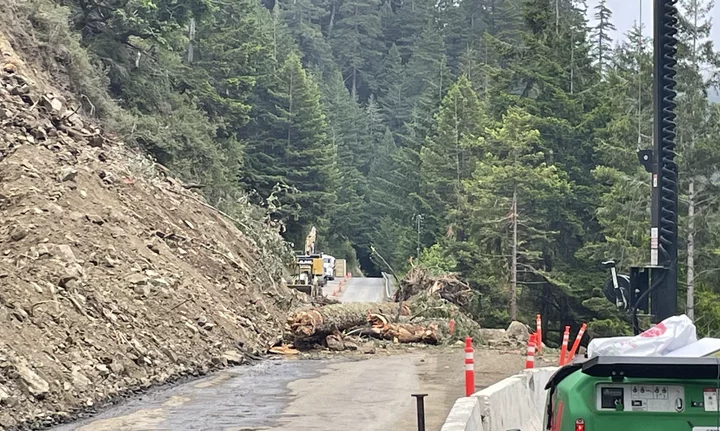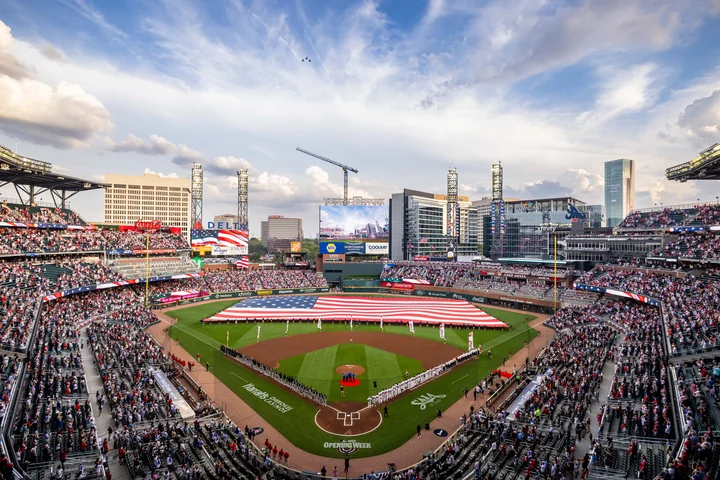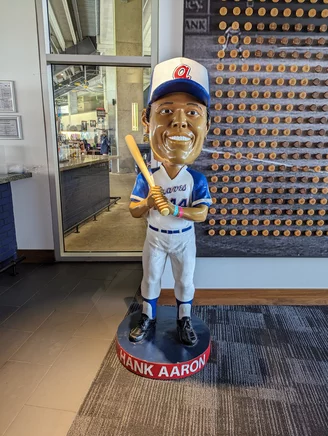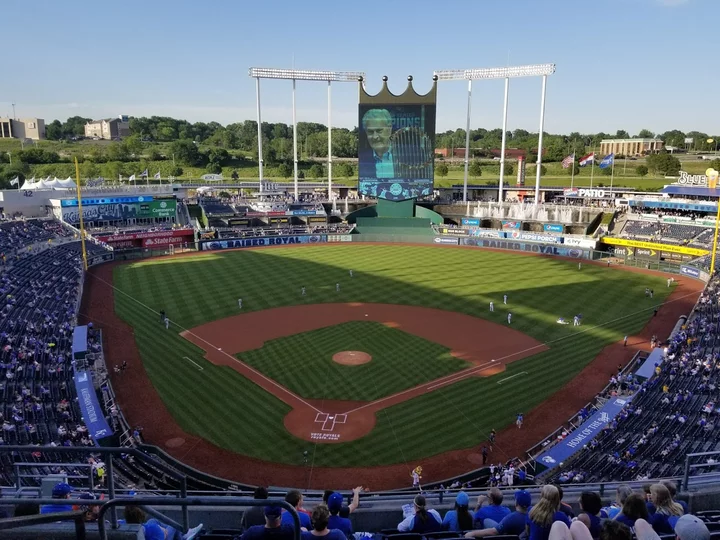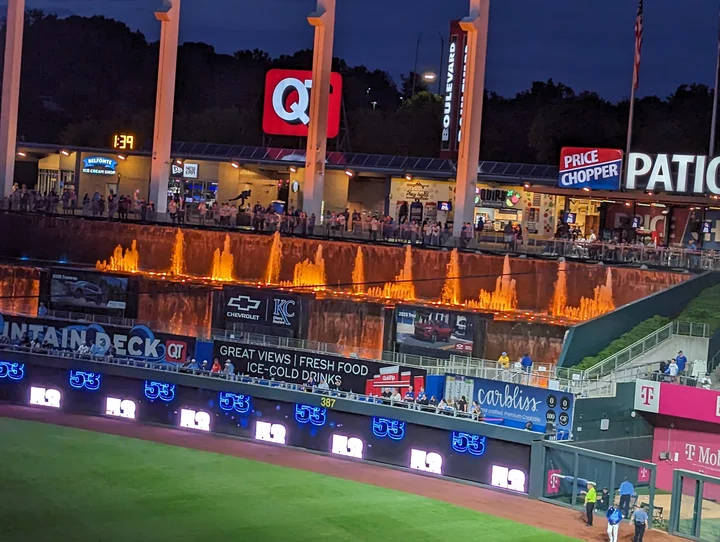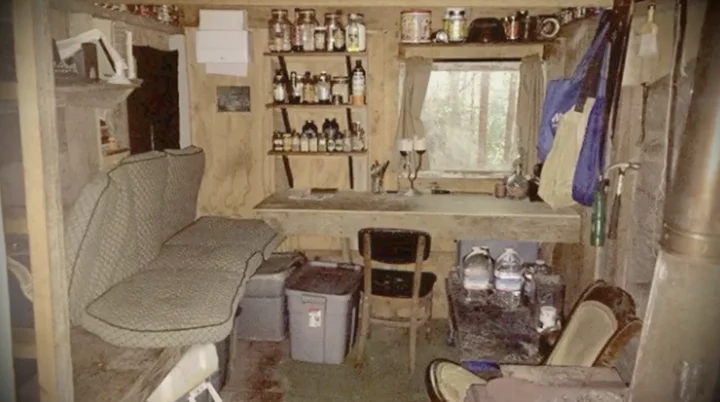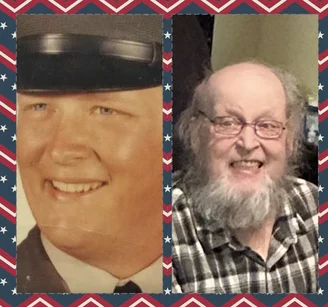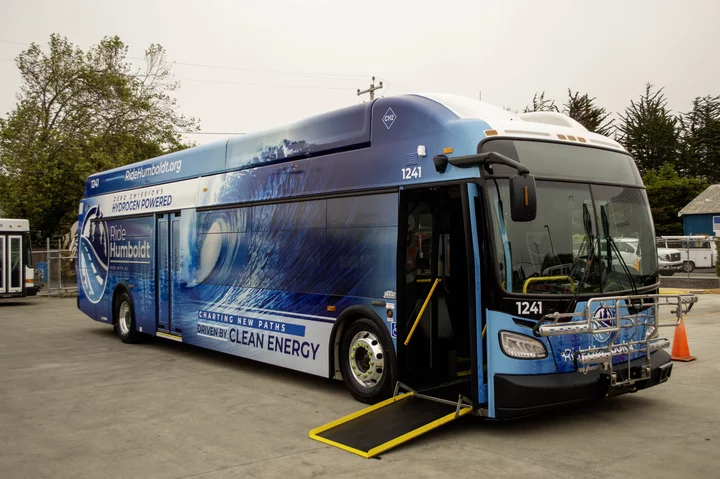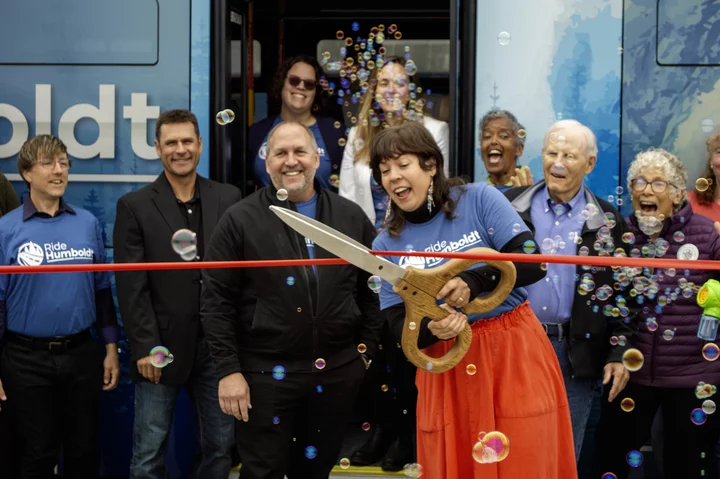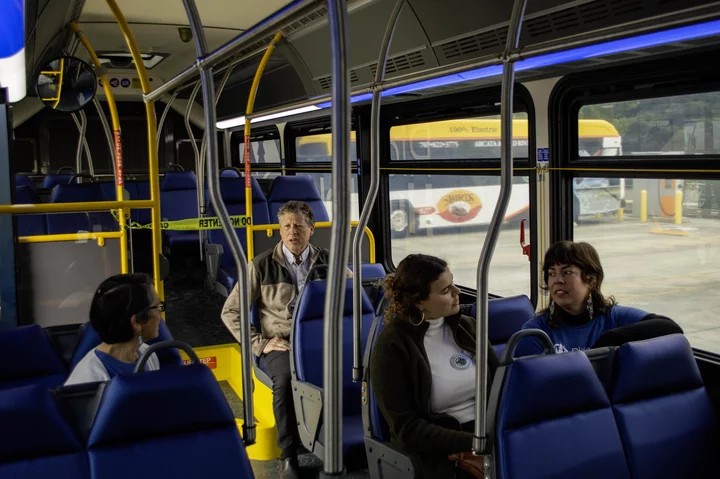Caltrans Provides Details on Worker Killed in Highway 36 Landslide
LoCO Staff / Sunday, June 1 @ noon / Traffic
PREVIOUSLY:
Caltrans release:
An employee of a contractor working on a Caltrans emergency project was killed during an active slide on Saturday morning, along Route 36 east of Swimmer’s Delight.
We extend our sincere condolences to the worker’s family and friends and all who knew and worked with him. This tragic incident, occurring shortly after our workers’ memorial service, serves as a reminder of the risks associated with our work on state highways.
The safety of the traveling public, department employees, and its contracting partners is always Caltrans’ top priority.
As of Sunday morning, the slide is still active, and Route 36 remains closed. Please follow Caltrans District 1 on social media for updates.
BOOKED
Today: 14 felonies, 9 misdemeanors, 0 infractions
JUDGED
Humboldt County Superior Court Calendar: Today
CHP REPORTS
Us101 S / Sr36 Ofr (HM office): Traffic Hazard
7480 Mm101 N Hum 74.80 (HM office): Assist with Construction
ELSEWHERE
RHBB: Car Fire Spreads to Vegetation West of Junction City, Closes Highway 299
NCJ: The Boys are Back in Town
Governor’s Office: Governor Newsom announces appointments 7.2.25
RHBB: Highway 36 May Reopen Near Grizzly Creek by Thursday Evening—Expect Delays and Escorted Travel
SPRINTING ACROSS AMERICA: Miami to Kansas City – Week Five of Our Major League Baseball Tour Across the Continent
Tom Trepiak / Sunday, June 1 @ 7 a.m. / Sprinting Across America
Truist Park. Photo: Kaleigh Bish for the Atlanta Braves, reprinted with permission.
PREVIOUSLY:
- SPRINTING ACROSS AMERICA: Eureka to San Diego — Week One of Our Major League Baseball Tour Across the Continent
- SPRINTING ACROSS AMERICA: San Diego to Arches NP – Week Two of Our Major League Baseball (and National Park) Tour Across the Continent
- SPRINTING ACROSS AMERICA: Denver to Houston – Week Three of Our Major League Baseball Tour Across the Continent
- SPRINTING ACROSS AMERICA: Houston to Miami (With an Interlude at a Louisiana Crawfish Boil) – Week Four of Our Major League Baseball Tour Across the Continent
###
Two more baseball parks in the books! This week we traveled to Atlanta and Kansas City, our 12th and 13th stadiums of the trip.
Game #12: Padres versus Braves at Truist Park in Atlanta, May 24
The Atlanta Braves did something very smart when they planned their new ballpark that opened in 2017. They also partnered with developers to create a mixed-use area with shops, dining, living and workspaces in the surrounding neighborhood near the park. The result is a dynamic complex that thrives year-round. Game days are just a bonus for what has been named The Battery. “I brag about this place all the time because there’s so much you can do,” said longtime Braves fan Maria Sanders. “You can come here three hours early, and you can pretty much fill your time with all the activities in The Battery area. Even when there is no game, this place is still packed on the weekends and the evenings because there is stuff to do. Distilleries, breweries, escape rooms.” The Braves have had strong attendance for decades because they are a regional team and they have been successful. Georgia fans are joined by those from Alabama, Arkansas, northern Florida, the Carolinas and Tennessee to cheer on the Braves. After the game we spotted license plates from Alabama, Florida, South Carolina, Tennessee and Pennsylvania before we left the parking lot.
Game atmosphere: Positive
Let’s start near the end. After the eighth inning the Braves led 7-1. At this point almost nobody has left the game! More than 41,000 people have decided collectively that “beating traffic” is not more important than the game. But after the last out of the eighth inning, some start to head for the exits. In our row is a family with the husband on the aisle and the wife next to us, kids in-between. The husband asks his wife, “Do you want to leave?” The response from the wife (Kim Nicholson)?: “What? You ought to be ashamed of yourself!” I love these baseball fans!
Abba, Brahms, Village People, and Buffalo Springfield. Those were the creative choices by Matthew Kaminski, the organist for the Braves, for walk-up songs for some Padres batters. Those who know me well know I love song games – and even invented a few – so I found Kaminski’s choices entertaining. His selections: Abba’s “Fernando” for Fernando Tatis Jr., Brahms’ “Lullaby Sheet Music” for Gavin Sheets, Village People’s “Macho Man” for Manny Machado and Buffalo Springfield’s “For What It’s Worth” for Jake Cronenworth. I will pay homage to Kaminski by placing three Top 40 song references within this story.
The fans are enthusiastic from beginning to end. The fireworks display person gets a workout with two home runs by the Braves (Matt Olson and Ronald Acuna Jr.) an Atlanta victory and, of course, when “the bombs bursting in air” lyric hits during the national anthem. … An extended Tomahawk Chop comes into play every time the Padres change pitchers, which happened three times. … Some ballparks do a Harry Belafonte version of “Day-Oh” to try to get the crowd going. That usually falls flat, although at Angels Stadium one of the vendors followed it up with “Churr-Oh” to highlight his wares. Atlanta instead plays the Freddy Mercury version where Mercury improvises several renditions to interact with the crowd. The Atlanta crowd was completely and loudly engaged in repeating Mercury’s prompts.
This season features the premiere of a family space in the Left Field Plaza called Children’s Healthcare of Atlanta Park. The former kid’s play area was renovated into new restaurant and seating spaces. “The Children’s Park space is brand new,” said Karely Avila Ledesma who works with the Braves marketing department. “There are many places to play in over 30,000 square feet. The mini baseball field and batting cages are very popular. The LED board is new, and it’s split between the mini baseball field and the live action in the stadium so parents don’t have to miss what’s going on in either game.” The rock-climbing tower from the old kid’s play area remains intact.
When designing Truist Park, the Braves used a different luxury seating strategy than many parks. They stayed away from Luxury Box Suites and instead developed entire luxury seating sections. But if you want to get a ticket in one as you pass through town, you’ll have to go to the secondary market. Buying them from the Braves involves a multi-year commitment of thousands or tens of thousands of dollars, and there is a waiting list of 10,000 people. Here are some options (prices listed are from Seat Geek for a Friday night game versus the Red Sox):
• Xfinity Club: There are about 1,300 larger, cushioned seats in this section in the 200 level behind home plate. There are also about 300 raised tables behind the seated section to enjoy your purchased food items or the complimentary popcorn, peanuts or Cracker Jacks you brought out of the Climate-controlled Xfinity lounge. Price range: $289 to $347 per ticket.
• Delta Sky Club: The Delta premium section has about 1,700 seats with access to the climate-controlled Delta Sky360 Club. The leather padded seats are behind home plate on the field level and Include food and drink - with in-seat service — with an ever-changing menu. Price range: $404 to $860 per ticket.
• The Pen: These seats are located above the Braves bullpen in right field. There are about 950 wider, breathable mesh seats in this section. There is a private space beneath the seats where you have access to complimentary ballpark classics and non-alcoholic beverages. Price range: $112 to $176 per ticket.
Ballpark cuisine: Positive
The heart of ballpark cuisine at Truist Park is the Outfield Marketplace, a new area this year built at the location of the old children’s play area in the right field concourse. It is a shaded area and features eight stalls, showcasing local restaurants with their take on ballpark fare. “We wanted to bring the flavors of Braves’ country to our fans,” said Avila Ledesma. Pepper’s is one of the participating businesses, a local hot dog stand that specializes in upscale hot dogs. No better place to show them off than a ballpark. Pepper’s offers four options and we sampled the Red Dawg – an all beef hot dog with turkey chili, cheddar and jack cheese, onions, garlic aioli and spicy mustard. That’s one flavorful hot dog! Another popular option is the Damn Dog! – all beef (or veggie) dog with truffle aioli, pickled jalapenos, caramelized onions and mozzarella. Other Outfield Marketplace vendors include Velvet Tacos and the Giving Kitchen. Each month at the Giving Kitchen, a local chef creates a special item to be spotlighted. This month it is a shrimp burger created by Terry Koval, the executive chef and a James Beard Award winner at the Deer and the Dove in Decatur. Proceeds from this stall benefit the Giving Kitchen, a local group that provides emergency assistance to food service workers through financial support.
The 1871 Grill in sections 113 and 141 has two new items that sound good and look fantastic: the Home Run Stack and the Pitcher’s Mound. The Home Run Stack is about eight inches high with two stacks of burgers, thick candied bacon, smoked brisket, pickled onion slaw, onion rings and barbecue sauce. The Pitcher’s Mound is crispy waffle fries covered with brisket, spicy queso, salsa verde, salsa roja and lime crema. Like I said, it sounds good and it did look amazing. Unfortunately, both fell a little flat on flavor. John Van Hoose tried the Home Run Stack. “It’s not amazing,” he said. “It’s just a lot. But I would split it with someone again.” Brittany Keown had a terse review of the Pitcher’s Mound. “It’s not soggy and it’s a little bland,” she said.
The Carvery in Section 111 comes to the rescue, offering two excellent options to ensure Truist Park gets a positive cuisine rating: Loaded Brisket Mac & Cheese Bowl, and Big League Boomstick. The Mac & Cheese Bowl is a generous serving of baked mac & cheese smothered with smoked brisket. There are a few green chilis mixed in, and the whole thing is drizzled with queso and barbecue sauce. Good to the last bite! The Big League Boomstick is actually a full meal delivered in its own carrying case. It’s not really ballpark fare but will certainly satisfy. It consists of a full rack of smoked pork spare ribs, molasses baked beans, jalapeno bacon macaroni and cheese, coleslaw and southern-style honey butter biscuits.
Club hospitality: Positive
How does a team provide Bob Uecker-type seats in the 300 section – the worst seats provided so far – and still get a positive rating? Southern hospitality, baby. Karely Avila Ledesma was our Braves contact, and she provided a personal tour for us of Truist Park that lasted more than an hour. On her day off. Our goal was to see and get information on the children’s play area and the Outfield Marketplace, and maybe get on the field for batting practice. All that happened and more. We also toured all the luxury seating areas and got to see a four-foot Bobblehead replica of Hank Aaron, my boyhood hero, in the Hank Aaron Terrace area. Displayed with the replica is the bat used to hit his record-breaking 715th home run. … Parking in the nearby media lot was also provided. … And the seats to the game weren’t that bad – to the left behind home plate with good sight lines. Just eight miles high. And no season ticket holders nearby to interview.
Game details: Braves win 7-1. Attendance 41,338. Time of game: 2:32.
Helpful tips: No shopping-type bags allowed, not even clear ones! Just small purses. And gallon-sized Ziplock bags. Parking is limited around the park, mostly reserved for purchasers of premium tickets. If you can find parking nearby, it will be $40. Otherwise, you’ll have a long walk after you park off site.
You don’t see that every day: After the top of the second, the scoreboard featured the “Hug Cam,” showing people around the stadium. When they see themselves, people usually oblige by hugging each other. Near the end of the segment, the camera rested on a Braves fan sitting next to a Padres fan. The Braves fan turned to hug her husband who was off camera. After the off-camera hug, the camera still rested on the Braves fan and the Padres fan. Lip readers could tell the Padres fan was saying “Ain’t no way.” The off-camera husband of the Braves fan comes into the camera view and, reaching over his wife, hugs the Padres fan.
The K. By Chibears85 - Own work, CC BY-SA 4.0, Link
Game #13: Reds versus Royals at Kauffman Stadium in Kansas City, May 28
The Royals cultivate their fans throughout Missouri and Kansas. Every year the Royals send players into elementary schools to talk to 5th graders about the team. It has a lasting impression. “I remember for me, it was Zack Greinke and Mike Sweeney who came to our class (in about 2007),” said Jake Mikesch who is from St. Joseph, Missouri. He was at the game with a group of friends from St. Joe who also went to school with Noah Cameron, the starting pitcher for the Royals in this game. “The Royals and the Kansas City Chiefs always come to the local areas around here to get the whole community involved,” he said. While the Royals have won only two World series titles - in 1985 and 2015 – the fans are super loyal because they believe the team really cares about the community.
“I was born into a family of Royals fans,” said Cassandra Bushell. “I went to the victory parade in a stroller in 1985 when I was 1 year old. Then in 2015 I went to that parade, coming full circle by bringing to it one of my kids in a stroller. Our life is so busy, it’s nice to have an activity where we can come and hang out.” Cassandra and her husband Aaron have four children. “We’re all sports fans,” she said. “Our kids know the game, and they’re really watching. It’s not about having popcorn; they’re here for the game. It’s fun to have a shared experience with our kids.”
Game atmosphere: Positive
“There’s plenty to do in the outer outfield area,” said Mikesch. “There is a bar and a restaurant, and all the activities for kids. As you know, Royals baseball hasn’t been great over the years, so it’s not always about watching good baseball. It’s just a fun park to come to the game, see a lot and have a lot of things to do.” The children’s area is dubbed the Outfield Experience and includes a mini golf course, a carousel, batting cages, a pitching challenge, and a mini field for kids under 48 inches tall.
The Royal fountains. Photo: Trepiak.
Royals fans appreciate good baseball – whether it’s by the Royals or their opponents. The club takes more of a “no frills” approach to the in-game entertainment. There are a couple of hyped activities such as the hot dog race (see details below), but mostly it’s just the wandering cameramen putting the fans on the big screen between innings. It also allows the Royals to showcase their water fountain that lines most of the outfield. Colored lights add to the beauty. … A lot of the fans stick around after the game for the post-game interview on the field that is also shown on the Royals broadcast of the game. From beginning to end, the Royals fans are engaged in the action.
We’re getting used to seeing some sort of mascot race at the games. Here it was between three people in hot dog costumes. The difference in Kansas City is the camera gives a close-up of each person inside each costume before the race so you can see their faces.
Ballpark cuisine: Positive
It is mostly standard ballpark fare at Kaufmann Stadium, with a few exceptions. There are two local barbecue vendors to choose from: Joe’s Kansas City Bar-B-Que and Smoak Craft Barbecue. We tried the Z-Man Sandwich at Joe’s. It’s slow-smoked beef brisket, smoked provolone cheese, topped with two onion rings, on a toasted Kaiser roll. Before we give you our review, here’s a conversation I had about the Z-Man with Carter Kline, just before he took his first bite. “It’s supposed to be just as good as the sandwich at the actual Joe’s restaurant,” he said, then he took a bite. “Is it as good as the restaurant?” I asked. “I don’t know. I’ve never had it at the restaurant. But I saw a guy on YouTube talk about it, and he gave it a 10 out of 10.”
We give it an 8 out of 10. When I got my Z-man, my first thought was “Is that all there is?” It was tasty with a nice smoky flavor, but it was small. A jumbo slider, really, with two big onion rings on top. The other BBQ option, Smoak Craft Barbecue, does not hold back on the portions. Consider its Pitmaster Platter: Half a pound of brisket, half a pound of hickory-pulled pork, half a pound of jumbo brisket sausage, hickory-pit beans, cheesy corn, white bread, Chef J House BBQ sauce, gold sauce, pickles and picked red onion. If we had come with a few friends, we would have tried this. They also offer brisket sandwiches and the sides a la carte. I asked Cassandra Bushell which BBQ joint she would choose between the two, and she said neither - the best barbecue in Kansas City in her opinion – Gates Barbecue - is not even represented at the game. Our recommendation at the ballpark is Smoak Craft.
Another sandwich option is Vinnie’s Italian Beef Pasqwich: shaved Italian beef topped with two slices of Provolone cheese, bacon, and hash brown patties, with Giardiniera aioli on a brioche bun. There is also the opportunity to try cheesy corn at several vendors. (We didn’t.) One vendor piqued our interest with the offer of Crab Fries. After further investigation, no crab. Just fries. They justified the “crab” title because the fries had creole seasoning.
Club hospitality: Neutral
Tickets and parking were provided. However, tickets were in the 300 level of the stadium. While that did not give us access to season ticket holders to interview, we were happy with who sat next to us (the Bushell family). Parking was supposed to be nearby in a reserved lot but the parking attendant did not like the size of our vehicle and sent us to the other side of the adjacent football stadium to park. Hey, we needed go get in our steps, anyway.
Game details: Royals win 3-2. Attendance 15,430. Time of game: 2:26.
Helpful tips: The gates do not open until one hour before first pitch for games Monday through Thursday, so don’t plan on seeing much of batting practice. (We generally get there 90 minutes early in order to walk the stadium to review food vendors.) It’s okay to bring in sealed bottled waters. See-through plastic bags are okay, too, along with normal-sized purses. Parking is $40 or $30 and plentiful around the dual-stadium complex.
You don’t see that every day: In the bottom of the fourth inning, Maikel Garcia scored from first base for the Royals on a single by Drew Waters. What makes this play even more surprising is the hit by Waters was on a 2-2 pitch with one out, so Garcia had no reason to be off-and-running on the pitch.
###
Tom Trepiak is the former sports information director at Humboldt State and a member of the Cal Poly Humboldt Athletics Hall of Fame.
THE ECONEWS REPORT: Is Offshore Wind Still on Humboldt’s Horizon?
The EcoNews Report / Saturday, May 31 @ 10 a.m. / Environment
Offshore windmills being assembled in Massachusetts. Photo: Tom Wheeler.
On Donald Trump’s first day in office, he signed an Executive Order directing all parts of the federal government to take steps to stop the development of offshore wind. This has left people wondering: what’s the future for offshore wind? Spoiler: it’s unclear.
Citing his executive order, on April 16, the Bureau of Ocean Energy Management issued a stop work order for Empire Wind\, a fully-permitted wind project off New York. Included in the rationale for the stop work order is a discredited conspiracy theory that offshore wind development was responsible for a spate of whale deaths. (A claim that has been thoroughly debunked although still commonly cited by anti-wind activists.) After the stop work order was issued, California Attorney General Rob Bonta and 17 other attorneys general filed a lawsuit to challenge the legality of Trump’s anti-wind executive order. Humboldt’s own EPIC, together with a coalition of other environmental organization, have filed an amicus brief in the litigation against the Trump executive order too. Approximately a month later, the Trump Administration lifted its stop work order. Why? They won’t say.
But despite uncertain federal waters, the Humboldt Bay Harbor District and the State of California continue to move forward on work for other necessary infrastructure to develop offshore wind. The Humboldt Bay Harbor District is continuing to develop its “green port” for build and service wind turbines. And the California Independent Systems Operator has selected a developer to build new transmission lines to service the project.
Breaking down all of these events and more is Matt Simmons, Climate Attorney at EPIC.
Have a question about offshore wind? Visit northcoastoffshorewind.org, a product of EPIC, Humboldt Waterkeeper, Blue Lake Rancheria, and the Redwood CORE Hub at the Humboldt Area Foundation.
AUDIO:
“The Econews Report,” May 31, 2025.
(Sorry, no transcript this week.)
(VIDEO) HUMBOLDT OUTDOORS: Uncovering the Legacy of the Mysterious Cabin in Arcata Community Forest
Isabella Vanderheiden / Saturday, May 31 @ 7:30 a.m. / Humboldt Outdoors
###
Nearly 10 years ago, a mysterious two-story cabin was found in the remote reaches of the Arcata Community Forest. And almost as suddenly as it was discovered, the cabin disappeared.
In today’s episode of Humboldt Outdoors, local documentarian Ray Olson recounts the story of the uncanny cabin, venturing deep into the forest in search of its secluded location.
Those who remember this story, originally reported by Kevin Hoover of the Mad River Union, will recall the remarkable craftsmanship of the structure, which measured between 12 and 15 feet high, with a peaked roof and wooden awning hanging over a small porch supported by a concrete block foundation. In other words, it wasn’t your run-of-the-mill makeshift shelter. It was a real cabin.
The structure was discovered in July 2015 by a city staffer, Mark Andre, who was out marking trees deep in the forest. Some time after it was found, officers with the Arcata Police Department conducted a welfare check at the cabin to ensure no one was incapacitated or in danger inside, but no one was there. They peered inside the cabin and found a well-organized home.
Screenshot
“There was everything you needed for a quiet, happy life in the woods,” Hoover says in the video above. “There was a little library with books. There was art on the walls. There was a very organized kitchen and pantry. … You could feel the presence of a person living there with their strong ethics and beliefs, following their bliss and following their own little doctrine and their own internal logic. It seemed as though they had elevated values of harmlessness and peaceful coexistence. They certainly put a lot of effort into removing any trash or sewage, because the place was absolutely immaculate.”
Even so, the structure was considered a nuisance as it was built without permission on public lands, and the owner was served with a notice. When staff came back to check on the structure a few weeks later, the structure had vanished, except for one little symbol arranged in the foliage on the ground.
“Everything was gone,” Hoover said. “Nobody fully removes everything in such a stealthy manner. … They approached the extraction just as they did the installation, which was zero impact and zero observation. It left as mysteriously as it appeared.”
What was the symbol? And did they ever find out who built the cabin? You’ll have to click “play” on the video for the full story!
OBITUARY: Lee Earl Mason, 1946-2025
LoCO Staff / Saturday, May 31 @ 6:55 a.m. / Obits
Lee Earl Mason passed away peacefully at home with his wife at his side in the early morning of May 28th 2025 after a long battle with cancer.
Lee was born October 29th 1946 to Phylliss Hubbard and Ernest Mason. He grew up in Eureka California and graduated from Eureka Senior High School in 1965. Shortly after graduating he enlisted in the United States Army. He served two years fighting in the Vietnam war earning a purple heart.
After being honorably discharged he came home and married his first wife Kathleen Forman. Together they had their two beloved daughters, Angela and Dana Mason. And Lee started his career at the pulp mill in Samoa where he went on to work for over thirty years.
After divorcing his first wife he went on to meet the love of his life, Christine Mason in 1992. They married in 1993 and with her came his step daughter Jennifer Woody.
Lee spent as much time as possible outdoors: traveling, camping, hunting, fishing, rock hunting, metal detecting, and gold panning were some of his favorite hobbies. He loved his “Titanic”, an old RV he spent many summers traveling and exploring in. In his final years Lee enjoyed playing computer games, gambling, cuddling his cats, and watching old war movies.
Lee is preceded in death by his mother Phylliss Hubbard, father Ernest Mason, step father Clarence Churchwell, sisters Corinne and Borgie Churchwell and his brother Karl Churchwell.
He is survived by his wife of 32 years Christine Mason. His daughters Angela Taylor (David), Dana Mason, and step daughter Jennifer Woody. Along with his five grandchildren: Brandon Harris, Shawn Mason, Mordina Taylor, Brianna Stiles, and Nathaniel Stiles.
Lee’s family is forever grateful for all of the VA’s staff that assisted in his case,especially Vicky and Renee. Hospice also assisted in his final weeks of life and the family is thankful for all of them as well.
At Lee’s request no funeral or memorial will be held. He just requested that people remember the good times, so the next time you raise a glass please think of him.
###
The obituary above was submitted on behalf of Lee Earl Mason’s loved ones. The Lost Coast Outpost runs obituaries of Humboldt County residents at no charge. See guidelines here. Email news@lostcoastoutpost.com.
(AUDIO) Fieldbrook Elementary Leadership Team Spreads Warm, Fuzzy Joy at KHUM Studios
Isabella Vanderheiden / Friday, May 30 @ 3:20 p.m. / On the Air
###
A few students from the leadership team at Fieldbrook Elementary School stopped by the KHUM studios today to chat with DJ Toby Tullis about some of the exciting projects they’ve worked on this semester. The leadership team, led by seventh and eighth graders, provides a platform for students to share ideas and collaborate on initiatives that “improve attendance, promote joy, and build community” within the school district.
“I think this is a great way for students to be a part of changing the school and having an opinion for the school, because without this, it would just be adults,” said Maya, one of the team leaders. “They’re great and they do amazing things, but they also don’t necessarily get into the minds of the students. Having students represent … is a great way to get their opinions out there.”
A few years ago, the leadership team launched a “warm fuzzies” initiative — gifting one another colorful pom-poms with glued-on googly eyes — to spread kindness and strengthen connections among classmates. The team was kind enough to gift fuzzies to the Outpost and our radio colleagues.
Click the link below to listen to the full interview!
###
(AUDIO) Fieldbrook Leadership Team on KHUM
Fuzz!
Humboldt Has a Shiny New Hydrogen Bus Ready to Ride
Dezmond Remington / Friday, May 30 @ 12:41 p.m. / Transportation
The bus. It’s blue and has a wave on it to emphasize that it only emits water. By Dezmond Remington.
PREVIOUSLY
- Humboldt Transit Authority Awarded $38.7 Million Grant to Buy Fleet of Hydrogen-Powered Buses, Enhance Connectivity Across Northern California
- Huffman Tours the Future Hydrogen Fueling Station, Credits Humboldt Transit Authority for Taking the Lead in Zero-Emission Public Transportation on the North Coast
- Humboldt Transit Authority Awarded $17.5 Million to Beef Up Service, Add More Electric Buses and Build Area’s First Long-Distance Hydrogen-Powered Coach
Years of painstaking effort paid off this morning when the Humboldt Transit Authority (HTA) unveiled their brand-new, revolutionary hydrogen-powered bus.
Funded by a 2022 $38.7 million Caltrans grant, the bus’s design was the result of teamwork between the HTA, the Schatz Energy Research Center, Ride Humboldt and Canadian bus manufacturer New Flyer.
Typical hydrogen fuel cell buses can’t go farther than 300 miles before running out of juice. This one is equipped with nine hydrogen fuel cells on the top and can travel over 400 miles without refueling, a process that takes only 12 minutes. It’s powered by a 100 kilowatt fuel cell.
Peter Lehman, a founder of the Schatz Energy Center, reminisced about testing the bus’s abilities by driving it from Trinidad to Scotia, up Berry Summit, and finally all the way to Ukiah with an extra 5,500 pounds and the heaters blasting the whole ride down. It still made it 435 miles.
“This is the best hydrogen fuel cell bus in America,” Lehman said.
Humboldt County Supervisor Natalie Arroyo cuts the ribbon with HTA director Gregg Pratt (left) and Peter Lehman (right).
The HTA claims no other rural transportation agency in the country has one like it.
Its emissions are nothing but water, and according to HTA General Manager Gregg Pratt, its use will eliminate over 125,000 gallons of diesel over the course of its lifetime.
It’s the first of many. The HTA has the funding to buy more than a dozen more hydrogen buses over the next two and a half years. The temporary fueling station they’re using on this bus will be replaced by a publicly accessible permanent one by the end of 2026.
The bus will service the Trinidad-Scotia and the new North Coast Express (from Eureka to Ukiah) routes when it’s put into service soon.
“Today’s a proud moment of progress,” Pratt said, “Not only for the Humboldt Transit Authority, but for Humboldt … . Embracing new technology hasn’t been easy, but this is a symbol of what’s possible when innovation meets action.”
Arroyo demonstrates the bus’s effective seats.

